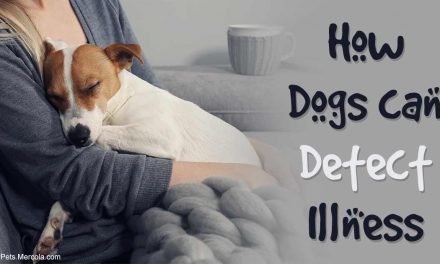A brand-new research study by scientists at Johns Hopkins University’s Bloomberg School of Public Health recommends that oils from a number of medical plants and typical herbs work versus the germs that triggers Lyme illness (Borrelia burgdorferi), and even much better —– they might be specifically helpful in easing consistent signs that do not react to antibiotic treatment.1
The research study, released just recently in the journal Antibiotics,2 evaluated 35 necessary oils pushed from plants or their fruits which contain the plant’s essence (scent). The scientists discovered that 10 of the 35 oils “revealed strong killing activity versus slow-growing and inactive ‘persister’ types of the Lyme illness germs.”
” We discovered that these necessary oils were even much better at eliminating the ‘persister’ kinds of Lyme germs than basic Lyme prescription antibiotics,” reported research study senior author Dr. Ying Zhang, teacher in the department of Molecular Microbiology and Immunology at the Bloomberg School.
.Necessary oils outshine drugs in eliminating ‘persister’ lyme germs cells.
In about 10% to 20% of human cases of Lyme illness, clients are detected with “consistent Lyme infection” or “post-treatment Lyme illness syndrome” that can be with them for months or perhaps years, triggering signs such as joint discomfort and tiredness.
Scientists have actually found that Lyme illness germs can go into a “fixed stage” in human beings defined by cells that divide gradually or not at all, called “persister” cells. These cells appear throughout durations of “nutrition hunger” or tension and are more resistant to prescription antibiotics. Fortunately, some scientists have actually entered search of drugs or medical substances beyond prescription antibiotics to see if they are more reliable versus sticking around Lyme signs.
In a 2017 research study, Zhang lead a group of scientists who discovered that necessary oils from oregano, cinnamon bark, clove buds, citronella and wintergreen eliminated fixed stage Lyme germs better than the best-performing pharmaceutical.
As kept in mind above, in the most current research study, Zhang and his group extended their screening (utilizing laboratory meals) to consist of 35 other vital oils and found 10 that reveal considerable killing activity at concentrations of simply 1 part per thousand. At this concentration, 5 of these oils —– from garlic bulbs, allspice berries, myrrh trees, increased ginger lily blooms and might alter fruit —– effectively removed all fixed stage Lyme germs in 7 days, without any germs growing back in 21 days.
” Another approach to verify the total obliteration of the bacterial cells is to perform sub-culture experiments,” describes Bhavana Achary, Ph.D, composing for the Medical News Bulletin. “Sub-culture experiments include taking a little part of the bacterial cells, rinsing the old culture medium which contains the drugs, and next include fresh culture medium to the cells.
The hypothesis is that if the preliminary treatment does not totally erase the bacterial cells, then they will grow back in the brand-new medium. The subculture experiments in this research study determined that 5 out of the 10 important oils (garlic, allspice, litsea, myrrh, and hydacheim cubeba) had actually totally removed the B. burgdorferi persister cells without any brand-new development observed.” 3
Other oils that carried out well in the lab-dish tests were from thyme leaves, cumin seeds, amyris wood and cinnamaldehyde, which is the aromatic primary component of cinnamon bark oil. Laboratory meal tests are thought about an early stage of this research study, however Zhang and his associates wish to perform tests in animals next, consisting of mice with relentless Lyme infection. If all works out, the scientists will proceed to tests in human beings, and ideally pet dogs.
It’s likewise crucial to keep in mind that this research study focused just on non-growing “persister” Lyme germs cells; extra research studies might assist identify if necessary oils are likewise reliable versus actively growing, duplicating B. burgdorferi cells. Obviously, more research study is required, however these outcomes are guaranteeing for all animals that are at danger of obtaining Lyme illness or have actually not been assisted by antibiotic treatment.
.Luckily, in pet dogs, while direct exposure to lyme germs prevails, real lyme illness is not.
In a 2006 research study on canine Lyme illness , Beagles were observed after direct exposure to B. burgdorferi.4 None of the adult canines ended up being ill and none revealed any signs of the illness. Not one of the adult Beagles established a fever, influenza signs or neurologic or heart concerns.
A couple of months after direct exposure, the Beagle young puppies in the research study established short-term signs such as fever and lameness for about 4 days. By the 5th day the signs were gone, suggesting the puppies’ bodies cleared the infection rapidly. The outcomes of the Beagle research study associate carefully to what vets see in their practices.
Ninety-five percent of pet dogs that check favorable for Lyme illness reside in about lots U.S. states (you can see a parasite occurrence map here ). These are states in which Lyme illness is endemic (prevalent) —– states with heavy invasions of deer ticks . There are cases of Lyme in other states, however in areas where the infection is uncommon, canines aren’t consistently checked for it unless they are symptomatic.
In locations of the nation where Lyme prevails, vets test routinely for the illness even in healthy pet dogs. The outcomes reveal that a big portion of pets are seropositive, suggesting they have Lyme-related antibodies in their blood from direct exposure to the illness. They have no scientific signs of infection.
The take-home message: While direct exposure to B. burgdorferi in pets prevails, Lyme illness infection is not. In some locations of New England, the huge bulk of healthy canines bring high Lyme antibodies —– they “radiance” favorable on the screening test (a 4DX or Accuplex blood test). These are not ill pets, however pet dogs who’ve been exposed to the germs that triggers the illness.
” Exposure” suggests canines’ bodies have actually come across the germs (simply as our bodies experience countless various germs that we do not end up being contaminated with) and have actually installed a proper immune action: They combated and made antibodies off the foreign intruder successfully.
Antibodies are an enduring action you can determine after your animal’s body has actually waged and won an effective fight with a pathogen. These pet dogs end up being “seropositive” for Lyme, indicating they’ve been exposed to the germs and won the fight. Although they evaluate favorable, they do not end up being ill with the illness, and they do NOT require prescription antibiotics.
.Prior to you accept prescription antibiotics for your pet, demand this test.
Unfortunately, lots of vets do not understand to evaluate for direct exposure versus illness, so they distribute unneeded prescription antibiotics that can damage your pet’s microbiome and established concerns for months and even years down the roadway. When they’re required and when they’re not, that’s why it should be your task to understand.
Many canines in both the U.S. and Canada are revealing regular “positives” on 4DX tests (the heartworm and other tick illness test I suggest everybody usage), however this does not imply they require prescription antibiotics, it suggests they require to be evaluated for infection. A lot of vets are seeing these initial screening tests and right away recommending doxycycline (an antibiotic) needlessly. If your veterinarian uses them without verifying your pet dog is really contaminated utilizing a QC6 test, my guidance is to decrease these drugs.
A quantitative C6 (QC6) test recognizes direct exposure from real infection, and over 90% of canines who check favorable on the screening test (4DX) do not require treatment, as their body immune system did precisely what it was expected to do —– combat the illness. The follow-up QC6 test is the only accountable choice and the one you must demand.
.When screening infection (CQ6) versus direct exposure (4DX), #ppppp> The large bulk of pet dogs are unfavorable. If your pet dog really is contaminated and prescription antibiotics are needed, you can produce a microbiome corrective strategy to decrease damage. The QC6 test ought to be rerun a minimum of every 3 months up until levels go back to regular.
I likewise suggest speaking with a practical or integrative medication vet if the levels do not continue to drop, given that there work alternatives for resistant infections (consisting of particular vital oils), however the majority of traditional veterinarians have no understanding or training in this location.
.Commonsense actions to assist your pet dog prevent lyme illness.
• • In the spring, fall and summer season, prevent tick-infested locations.
• • If you live where Lyme illness is endemic or you accidentally end up in a tick-infested location, inspect your pet dog for ticks two times every day. Examine her whole body, consisting of in her ears, under her collar, in the webs of her feet and under her tail.
• • Use a tick deterrent. You can make a natural bug deterrent for your canine extremely quickly in your home. It will assist him prevent an excellent portion of the insects he experiences, though not all of them. The dish: blend 8 ounces of distilled water with 4 ounces of natural, unfiltered apple cider vinegar and 10 drops of neem oil.
Neem oil works due to the fact that fleas and ticks hate it. It’s likewise terrific for animals who are really conscious smells. Catnip oil can likewise be utilized as an insect deterrent, because it has actually been shown to be as efficient as diethyltoluamide (DEET), the mosquito and tick spray people utilize that has a variety of harmful negative effects.
If you wish to include some additional punch to your canine’s bug deterrent dish, choose 5 drops of lemon, lemongrass, geranium or eucalyptus oil. Since I discover it really efficient, I utilize geranium oil rather a bit. I utilize it in my Dr. Mercola natural flea and tick items. Including the additional punch of one of the important oils I noted can be really advantageous if you have a pet dog who comes in contact with ticks.
Important note —– If you’ve heard or checked out alarming cautions about necessary oils for pet dogs like this one , and you’re worried about them as an outcome, it’s essential to recognize there’s a great deal of mis- and disinformation drifting around, due in part to the increasingly competitive market for natural family pet items. Once again, I advise speaking with an integrative vet about proper vital oils and other nontoxic, natural solutions.
You can save your homemade bug deterrent in the refrigerator, which is what I do. Prior to my pets go out in the early morning, I mist them with it, bewaring to prevent their eyes. The active components, specifically the oils in the dish, dissipate in about 4 hours, so you might require to reapply it a number of times throughout the day. Possibilities are your vet will advise you utilize a chemical bug repellent if you live in a Lyme endemic area of the U.S..
It’s essential to examine the dangers and advantages of any medication (or in this case, pesticide) prior to you provide it to your animal, as many have adverse effects. If you utilize these preventives, think about a detox procedure for a week after administration. Lots of family pet moms and dads residing in tick endemic locations have the ability to turn chemical preventives with natural deterrents throughout the summer season, lessening the quantity of pesticides required to avoid external parasites.
• • There is a vaccine readily available for Lyme illness, however I do not advise it for a number of factors. Top, this vaccine is understood to send out the body immune system into overdrive, which can set off a variety of severe secondary responses consisting of autoimmune illness . Number 2, the vaccine does not avoid ticks from connecting, so a topical tick repellent is likewise essential.
.
Read more: healthypets.mercola.com






Recent Comments